#Animal Feed Supplements Market
Text
Exploring Innovations Revolutionizing the Animal Feed Industry

Introduction
The global animal feed market was valued at over USD 460 billion in 2021 and is projected to exceed USD 650 billion by 2028, registering a compound annual growth rate CAGR of 4% during the forecast period. The Animal Feed Market is experiencing dynamic changes driven by evolving consumer preferences, technological advancements, and sustainability initiatives. This in-depth analysis delves into the latest innovations shaping the animal feed industry, providing insights into key trends, opportunities, and challenges for stakeholders.
Innovations Driving the Animal Feed Market:
Alternative Protein Sources:
With the escalating demand for sustainable and plant-based diets, alternative protein sources for animal feed formulations are gaining momentum.
Innovations in insect protein production, algae cultivation, single-cell proteins, and microbial biomass offer sustainable alternatives to conventional protein sources like soybean meal and fishmeal.
These alternative protein sources not only promote environmental sustainability but also provide essential nutrients for animals while reducing reliance on scarce resources.
Precision Nutrition:
Advancements in precision nutrition technologies are reshaping feed formulation and delivery, enabling customized diets tailored to individual animals' specific nutritional requirements.
Technologies such as near-infrared spectroscopy (NIRS), metabolomics, and predictive modeling enable real-time monitoring of animal health, performance, and nutrient utilization, leading to more efficient feed management practices.
The precision nutrition segment is anticipated to witness substantial growth, driven by increasing investments in digital technologies and data analytics, with the market expected to surpass USD 3 billion by 2028.
Alternative protein sources are expected to capture a significant market share, with insect protein alone projected to reach USD 1.5 billion by 2028.
Functional Feed Additives:
Functional feed additives, including probiotics, prebiotics, enzymes, organic acids, and botanical extracts, are gaining prominence for their potential to enhance animal health, immunity, and performance.
These additives support gut health, improve nutrient absorption, and mitigate the adverse effects of stress, pathogens, and environmental challenges on animal welfare.
Innovations in encapsulation and delivery technologies are enhancing the stability and efficacy of functional additives, ensuring their effectiveness throughout the animal's digestive tract.
Blockchain and Traceability:
Blockchain technology is increasingly being harnessed to enhance transparency, traceability, and accountability in the animal feed supply chain.
Through blockchain-based platforms, stakeholders can track feed ingredient journeys from farm to fork, ensuring compliance with quality standards, safety regulations, and sustainability criteria.
Blockchain facilitates seamless data sharing and verification across the supply chain, mitigating the risks of fraud, contamination, and mislabeling, thereby safeguarding animal and human health while bolstering consumer trust.
Challenges and Opportunities
Regulatory Hurdles:
Despite the potential benefits of innovative feed technologies, regulatory hurdles and approval processes can impede their adoption and commercialization.
Stakeholders must navigate complex regulatory landscapes and demonstrate the safety, efficacy, and sustainability of novel feed ingredients and additives to gain regulatory approval and market acceptance.
Cost Considerations:
The adoption of innovative feed technologies may involve higher initial costs and necessitate investment in research and development.
Stakeholders must carefully evaluate the cost-benefit ratio of implementing new technologies, considering factors such as feed efficiency improvements, animal performance gains, and long-term sustainability benefits.
Conclusion
Innovation is driving profound changes in the Animal Feed Market, offering transformative solutions to meet the evolving needs of livestock producers, consumers, and the environment. By embracing cutting-edge technologies and addressing regulatory challenges, stakeholders can unlock new opportunities for sustainable and profitable animal nutrition solutions while ensuring the health, welfare, and productivity of animals.
#Animal Feed Suppliers#Animal Feed Companies#Animal Feed Additives Market#Animal Feed Market Share#Animal Feed Market#Animal Feed Industry#Animal Feed Market Size#Compound Feed Market#Global Animal Feed Market#Global Animal Feed Market Size#Animal Feed Composition Market#Animal Feed Industry Trends#Animal Feed Market Growth#Animal Feed Market Challenges#Animal Feed Market Type#Animal Feed Market Research Reports#Animal Feed Industry Research Reports#Animal Feed Supplements Market#Animal Feed Suppliers Market
0 notes
Text
Global Animal Nutrition Market Is Estimated To Witness High Growth Owing To Increasing Demand for Nutritious Feed
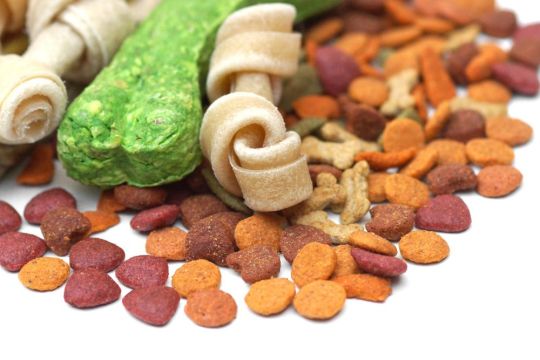
The global animal nutrition market is estimated to be valued at USD 22.18 billion in 2022 and is expected to exhibit a CAGR of 6.93% over the forecast period 2023-2032, as highlighted in a new report published by Coherent Market Insights.
A) Market Overview:
The animal nutrition market deals with the production and supply of nutritious feed for animals. This includes feed additives, supplements, and premixes that are essential for the growth and development of animals. The market offers a wide range of products tailored to the specific needs of various animal species such as poultry, swine, ruminants, and aquaculture.
The need for high-quality animal nutrition products arises from the increasing demand for meat, dairy, and other animal-based products, driven by the growing global population. Consumers are becoming more aware of the importance of a nutritious diet for animal health and welfare, which in turn impacts the quality and safety of the end products they consume. As a result, there is a rising focus on providing animals with balanced diets that promote healthy growth, improve productivity, and reduce the risk of diseases.
B) Market Key Trends:
One key trend in the animal nutrition market is the shift towards natural and organic feed additives. With the increasing preference for clean-label products and sustainable farming practices, there is a growing demand for feed additives derived from natural sources. Organic additives offer several benefits such as improved digestion, enhanced immunity, and reduced dependency on antibiotics. For example, probiotics and prebiotics derived from natural sources have gained significant popularity as they promote gut health in animals without any adverse effects.
C) PEST Analysis:
Political: Government regulations on animal welfare and feed safety standards play a crucial role in shaping the animal nutrition market. Strict regulations regarding the use of antibiotics and growth-promoting substances in animal feed are driving the demand for alternative feed additives.
Economic: The increasing disposable income and changing dietary preferences of consumers are driving the demand for high-quality animal-based products. This, in turn, is pushing farmers and animal nutrition companies to invest in premium feed solutions for better animal health and improved product quality.
Social: The rising awareness about animal welfare and the impact of animal nutrition on human health is influencing consumer preferences. There is a growing demand for products that are produced using sustainable and ethical farming practices.
Technological: Advancements in technology have enabled the production of innovative animal nutrition solutions. Precision feeding, precision farming, and digital technologies are being adopted to optimize feed formulations and monitor animal health and performance.
D) Key Takeaways:In terms of market size, the global animal nutrition market is expected to witness high growth, exhibiting a CAGR of 6.93% over the forecast period. This growth can be attributed to increasing consumer demand for safe and nutritious animal-based products. The rising focus on natural and organic feed additives is also expected to drive market growth.
Regionally, Asia Pacific is expected to be the fastest-growing and dominating region in the animal nutrition market. The growing population, rising urbanization, and increasing disposable income in countries like China and India are driving the demand for high-quality animal-based products. Additionally, the presence of key players in the region further contributes to its dominance.
Key players operating in the global animal nutrition market include Archer-Daniels-Midland Company, Adisseo France SAS, Alltech, BASF SE, Cargill Inc., Dow Chemical Company, DuPont, Evonik Industries AG, Tata Chemicals, Novozymes A/S, Royal DSM N.V., Kemin Industries, Inc., and Nutreco N.V. These players focus on research and development activities to introduce innovative products and gain a competitive edge in the market.
Overall, the animal nutrition market is poised for significant growth due to increasing demand for nutritious feed, rising consumer awareness about animal welfare, and the need for sustainable farming practices. Key players and industry stakeholders need to capitalize on these opportunities to meet the growing market demands and address the evolving needs of consumers.
#Coherent Market Insights#Healthcare Industry#Pharmaceutical#Animal Nutrition Market#Livestock Feed#Feed Additives#Nutritional Supplements
0 notes
Link
0 notes
Text
Did you know the gold standard for pet pigeons is pigeons raised by their own parents?
That's right! Unlike the common practice of hand-raising that is performed for parrots (we won't get into those ethics here), hand-raising is the LAST thing you want to do with pigeons.
But what is so bad about it? What problems arise? What's the alternative?
Behold, I will tell you.
The most immediate issue that arises with hand-raising over parent-raising is the success rate of making it to adulthood. Pigeons have several biological traits that makes this process extremely difficult for us to adequately copy.
Most birds feed their young the same way. You know exactly what I'm talking about, because even if you haven't seen it in person, you've seen pictures, or even cartoons! Most baby birds open their beaks up as wide as they can go, and mom and dad reach in there to supply food. Hand-raising baby birds with this trait is easier.
Pigeons do not do this. The parent takes the child's beak in their own before barfing up the goods. Pigeon babies (squabs) seek food with a closed beak as a result. And they really, really do not like you trying to pry it open to get food in there.
Most emergency hand-raising or supplementing of columbids is done through specially engineered methods that help mimic this style of eating, but even that isn't perfect.
Columbids (pigeons and doves) are one of three groups of birds that produce this really amazing thing called 'crop milk.' The other two are penguins and flamingoes. Weird combo, isn't it. Maybe not!
It's thought that crop milk originated to feed the young of these species due to their heavily specialized diets and circumstances. Flamingoes are extremophiles who ingest things like brine shrimp and algae. Penguins live on a varying diet of seafood, often in very inconvenient locales. Pigeons (ours at least) are granivores, and grain is typically hard for young animals to make use of. But even the fruit eating pigeons are like this. So what is the huge advantage of crop milk?
With crop milk, you don't have to change your diet or find unusual food items to feed your offspring. With crop milk, your offspring gets an enormously nutritious meal right out the gates, with all the fats and proteins and carbs they could want, pre-made and ready to go. With crop milk, both parents can produce this super meal and extend their chances with this investment cost. All of these groups have very small numbers in their clutches at a time. Some species of penguin only raise one chick a year. To my knowledge, flamingoes also go one at a time. Columbids like rock doves (our pigeons) and mourning doves are capped at 2 per clutch, unless an accident happens. We will get to that.
Here's the rub.
Baby pigeons are one of the fastest growing birds on the planet. The crop milk is a big, big factor in that.
What happens if a 3rd baby is born in those nests, by the way? Usually nothing good. 2 babies are perfectly balanced to receive their parents efforts. 3 is enormously taxing on them and draining on them physically. Responsible breeders do not let their birds have 3 babies on accident. It can lead to deaths.
We don't have an adequate crop milk replacement yet. Even things marketed for this purpose fail. I know breeders who have desperately worked on improving their methods when a baby pigeon NEEDS intervention, and they've made improvement, but it still isn't perfect.
There's a scientific paper that details the gut microbiome transfer between parents and child in pigeon crop milk. It's hard to know how vital that bacteria is. Even if a crop milk substitute could be made with enough protein and fat and less sugar, would there still be a probiotic gap in it?
It is not unusual for a baby pigeon who misses out on parental crop milk to die. Sometimes two weeks later, when you thought maybe they would make it. They get this odd, dried, purple tint to them and most don't pull through past that. We call it FTT, or failure to thrive. There's no other reason they pass - it's not disease. They just stop.
No breeder worth their salt will take a baby to be hand-raised. It's dangerous for the baby. And, it impacts their mental development.
Pigeons that are raised by humans successfully become what we call human imprints. This means they don't really know they are a pigeon. They think they are like their parent - the big ape!
Imprints are NOT desirable among domestic species, or arguably at all, but pigeons are domestic so we'll stick there.
Pigeons who think they're people don't understand why we won't listen to them. So they ramp up their social signaling to 11. They bite as hard as they are capable of, which you can find out is pretty hard actually. They can't be housed with other pigeons. Not only do they have the tendency to be violent, but other pigeons don't like imprints. They tend to sense something is 'off' about them. This can lead to grouping up on one bird. And there's no fixing this. The bird can't be taught otherwise past a certain age. Their owners can find them extremely frustrating.
Don't make this mistake if you don't have to.
So what's the alternative, then?
Parent-raised babies who are socialized by humans, but left to grow up in the nest the majority of the time. Companion-bred birds from ethical breeders will be this. And it works.
Allowing the pigeon to maintain its social identity while introducing them to the fact that people can be great too is the best of both worlds. I personally used my parents as part of the socialization process - feeding the whole family in my lap to help show the babies that there was nothing to be afraid of.
And socialization can get very thorough. Everyone has their own method. But its the best chance you have of an out-of-box friendly bird. Especially from people who actually know their lines and have cultivated good stock.
Long story short, don't try creating imprints for no reason. They'll be messed up, you will be frustrated, and you could end up killing the bird.
I hope that was informative!
If you enjoy my posts, please consider tipping me on ko-fi!
17 notes
·
View notes
Text

𝐒𝐨𝐲 𝐏𝐫𝐨𝐭𝐞𝐢𝐧 𝐈𝐧𝐠𝐫𝐞𝐝𝐢𝐞𝐧𝐭𝐬 𝐌𝐚𝐫𝐤𝐞𝐭: 𝐀 𝐆𝐫𝐨𝐰𝐢𝐧𝐠 𝐓𝐫𝐞𝐧𝐝 𝐢𝐧 𝐍𝐮𝐭𝐫𝐢𝐭𝐢𝐨𝐧
𝐃𝐨𝐰𝐧𝐥𝐨𝐚𝐝 𝐅𝐑𝐄𝐄 𝐒𝐚𝐦𝐩𝐥𝐞: https://www.nextmsc.com/soy-protein-ingredients-market/request-sample
The 𝐒𝐨𝐲 𝐏𝐫𝐨𝐭𝐞𝐢𝐧 𝐈𝐧𝐠𝐫𝐞𝐝𝐢𝐞𝐧𝐭𝐬 𝐌𝐚𝐫𝐤𝐞𝐭 is gaining momentum as consumers and manufacturers alike seek healthier and sustainable protein sources. With its diverse applications and nutritional benefits, soy protein is making a significant impact across various industries:
𝙃𝙚𝙖𝙡𝙩𝙝 𝙖𝙣𝙙 𝙒𝙚𝙡𝙡𝙣𝙚𝙨𝙨 𝙁𝙤𝙘𝙪𝙨: Soy protein is valued for its high-quality protein content and benefits such as supporting muscle growth and managing cholesterol levels.
𝙀𝙭𝙥𝙖𝙣𝙙𝙞𝙣𝙜 𝘼𝙥𝙥𝙡𝙞𝙘𝙖𝙩𝙞𝙤𝙣𝙨: From plant-based food products and dietary supplements to animal feed, soy protein ingredients are increasingly being incorporated into a wide range of products.
𝙎𝙪𝙨𝙩𝙖𝙞𝙣𝙖𝙗𝙞𝙡𝙞𝙩𝙮 𝘾𝙤𝙣𝙨𝙞𝙙𝙚𝙧𝙖𝙩𝙞𝙤𝙣𝙨: As a plant-based protein source, soy protein is contributing to more sustainable food systems by reducing reliance on animal-based proteins.
𝐀𝐜𝐜𝐞𝐬𝐬 𝐅𝐮𝐥𝐥 𝐑𝐞𝐩𝐨𝐫𝐭: https://www.nextmsc.com/report/soy-protein-ingredients-market
𝐊𝐞𝐲 𝐏𝐥𝐚𝐲𝐞𝐫𝐬
Dupont Ei De Nemours & Company
ADM
Cargill
Benson Hill
Now Foods
Burcon NutraScience Corporation
Farbest Brands
Wilmar International
CHS Inc.
With its growing popularity and versatility, soy protein ingredients are set to play a crucial role in the future of nutrition.
7 notes
·
View notes
Text
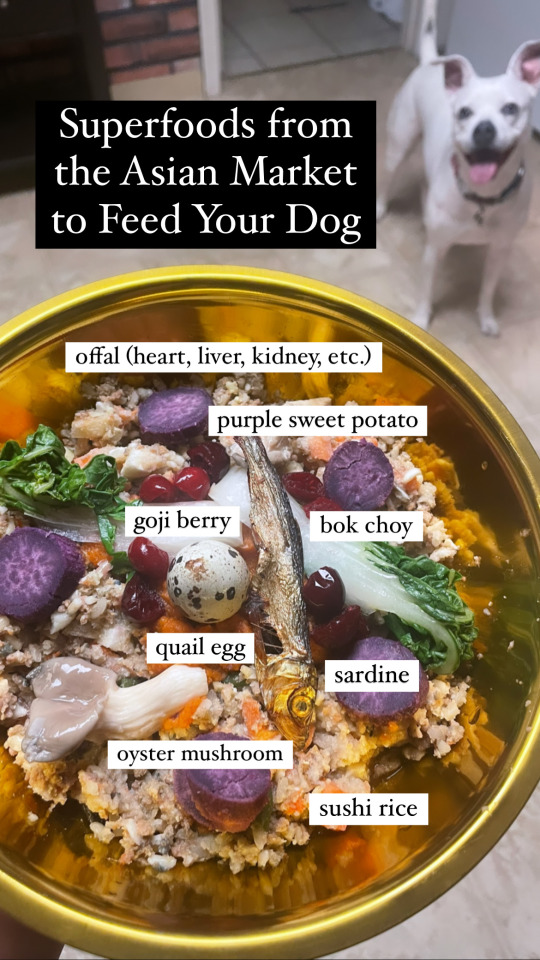
These past few years, I have become a huge advocate for feeding fresh food to dogs to enhance their lives. However, you don't exactly have to transition your dog to a 100% fresh food diet in order to gain the benefits of fresh food.
Simply adding fresh food to your dog's kibble can go a long way in improving their nutrition and overall health. For instance, one study done a group of dogs in 2005 revealed that feeding vegetables just three times a week had significantly lowered their risk of developing cancer, compared to dogs who were only fed kibble.
Asian markets, in particular, have some very beneficial fresh food items that aren't typically found at your local grocery store. These food items, however, are not intended to fully replace your dog's food. Remember - too much of something good can be bad for you.
Instead, they should be offered in moderation as treats, or just small amounts topped over an already complete and balance meal. As a general rule of thumb, treats/toppers should never make more than 10% of your dog's overall diet.
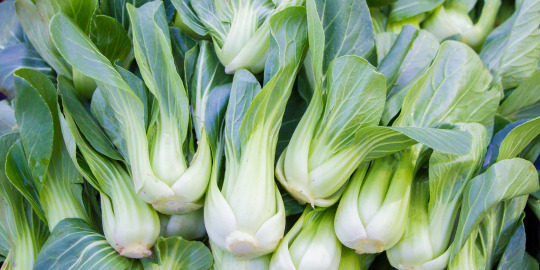
Bok choy (Chinese cabbage) is full of essential vitamins and minerals needed to support a dog’s eyesight, cardiac function, digestion, bone strength, and immunity. Sulfurophane - a compound found in bok choy and other cruciferous vegetables - has been linked to inhibiting cancer cell growth, lowering blood pressure, and activating the nuclear factor Nrf2 which prevents the development of diabetes and its complications. Bok choy’s low calorie, high fiber content also make it a good option for a snack/food topper for dogs who need to control their weight.
Preparation: Lightly steam or boil for better nutrient absorption. Cooking will also help neutralize the enzyme (myrosinase) that can decrease thyroid function. You should also chop/trim their long leaves to avoid choking hazards.
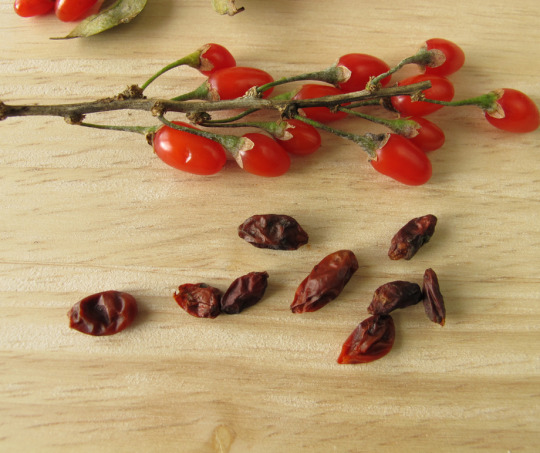
Goji berries (wolfberries) are rich in amino acids, carotenoids which support healthy vision, and polyphenols that have anti-inflammatory, anti-tumor, and cardio-protective properties. Studies on goji berry supplementation in animals have shown that it has the potential to help lower cholesterol, protect the liver by increasing hepatic antioxidant activity, as well as enhance metabolic homeostasis and prevent diabetes-induced renal inflammation.
Preparation: Remove stems if still attached and cut/mash berries. If dried, soak in water until softened to avoid passing straight through the GI tract and losing the benefits of its nutrients.
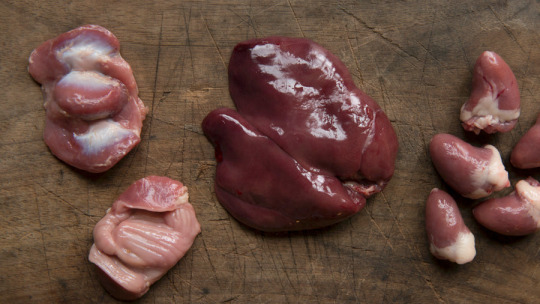
Offal refers to the internal organs and variety meats of animals that can be consumed as food (i.e. lung, heart, kidney, liver, gizzard, head, feet, etc.) The word 'offal' literally translates to "fall off", and thus, whatever falls off the skeleton during the butchering process. Offal is densely loaded with essential vitamins, minerals, proteins, and fats - so small amounts go a long way. Pet owners who use these as ingredients as part of a complete and balanced recipe should keep in mind that each organ is unique in its nutrient profile - dependent on the animal it is sourced from and how it is raised. For example, grass-fed beef may contain less fat yet more vitamin A and E than grain-fed beef, and beef liver has significantly more vitamin A and copper than chicken liver.
Preparation: Boil in water or low-sodium broth. May also be baked or dehydrated into jerky treats.
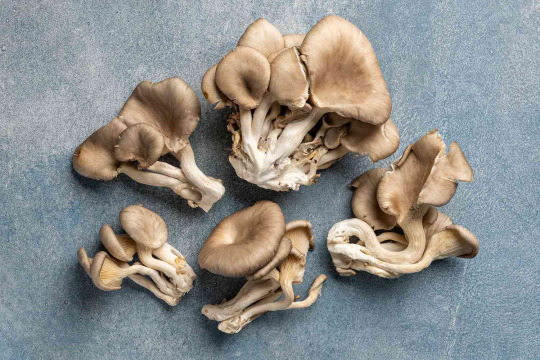
Oyster mushrooms are a good source of protein and fiber, and vitamins that support healthy digestion. They can help to increase satiety and maintain healthy body weight. Oyster mushrooms are also full of pantothenic acid which help to maintain cognitive function and healthy skin/coat. Beta-glucans derived from oyster mushrooms have also been shown to reduce inflammation and strengthen immunity.
Preparation: Lightly sauté or boil in water or low-sodium broth. Raw or dried mushrooms can be difficult for dogs to digest.

Purple sweet potato (Ube or Okinawan sweet potato) are typically found in grocery stores more commonly during the fall/winter seasons. They contain more antioxidants than regular sweet potatoes due to the anthocyanins that cause their violet hue. While all potato varieties may impact blood sugar levels because of their high carbohydrate content, purple potatoes may exert less of an effect because of their high polyphenol content that decreases the absorption of starches in the intestines. In addition, they have been linked to improving blood pressure, likely due to their high potassium content.
Preparation: Peel skin and bake until soft for better digestibility and to prevent intestinal blockages. May be boiled and drained to reduce oxalate intake for dogs with a history of bladder stones, or prone to urinary issues.
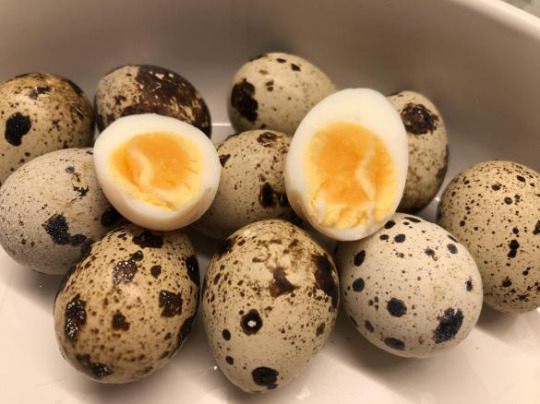
Quail eggs are small, yet packed with protein and essential fatty acids, and have a higher ratio of iron, riboflavin, and vitamin b12 than chicken eggs. It is even safe and can be beneficial to feed them with the shells included for added calcium. Quail eggs have been linked to improving bone growth/healing, reducing liver damage, and increasing energy levels. While some studies have shown evidence of quail eggs treating allergies in humans and mice, they may be less likely to trigger reactions than chicken eggs in dogs who have poultry sensitivities.
Preparation: Wash thoroughly, and handle gently as they are more fragile due to their tiny size. Cooking methods are similar to that of chicken eggs, yet require less time.

Sardines contain all the amino acids your dog needs for optimal health, making it a "complete protein". They are also notorious for being rich in omegas and coenzyme q-10, which help support heart and brain health. What sets sardines apart from other fish, too, is that they are smaller and more short-lived species than larger predator fish and may have less of a risk for mercury poisoning. Because they are so small and have soft bones, you can feed them whole to your pets.
Preparation: Bake or dehydrate. If already purchased as dried, be sure to make sure there is no added salt or seasonings. If canned, preferably those stored in water only.

Sushi rice (Japanese sticky rice) has a high proportion of starch and moisture, giving it a stickier texture when cooked. Sushi rice has virtually zero fat, yet still provides a desirable balance of nutrients while remaining gentle on a dog’s digestive tract. Its higher iron content than regular rice supports healthy blood circulation and can provide more energy to dogs who are recovering from illness. Cooling/refrigerating the rice before serving also enables more retrogradation of prebiotic fiber, helping to lower glycemic responses and maximize intestinal function.
Preparation: Rinse thoroughly and soak in water (with 1tbsp apple cider vinegar - optional) before cooking. If you don’t have a rice cooker or instant pot, boil on the stove until the water is completely absorbed. May be cooked with bone broth for added flavor. You can also use small amounts of beet root powder, turmeric, or blue spirulina to add color and nutrients.
#asian markets#pet food#dog treats#bok choy#goji berries#offal#oyster mushrooms#quail eggs#sardines#sushi rice#purple sweet potato
7 notes
·
View notes
Text
Animal Feed Additive Market- Nourishing Industry Landscape
Animal feed additives are used to meet the nutritional needs of animals through the feed itself. This combination of ingredients is added to the animal feed mix to fulfill specific growth demands. These additives are usually added in micro quantity. It is used to increase efficiency, control diseases, and rate of gain.
Animal feed additives are vital in modern agriculture to enhance the nutritional capacity of livestock. From vitamins and minerals, probiotics, and additives continue to contribute to growth and overall performance. Animal feed additives are increasingly being demanded for optimizing feed quality and promoting animal welfare.
Antioxidants and amino acids supplements are growth promoters as the livestock industry is challenged by growing demand for the population. Ensuring the supply of quality food and animal well-being from a sustainability perspective are upfront challenges ahead of companies.
Innovation and research are keys to improving food production sustainability and their impact on animal farming. It reduced the carbon footprint of agriculture. Farmers have become increasingly aware of their feed impact and the overall performance of their livestock. Stringent quality standards of livestock feed are pushing farmers towards high-quality feed additives in animal nutrition programs.
Several countries have placed restrictions on the use of antibiotics in animal feed as it created conditions of antimicrobial resistance. The paradigm shift in the industry towards sustainable alternatives is anticipated to increase the share of animal feed additives in the coming years.
4 notes
·
View notes
Text

'Hide Hunters'.
Mural by Texas artist Harold Dow Bugbee, 1956, which can be seen at the Panhandle-Plains Historical Museum’s in Canyon, Texas.
I am going to write an essay about bison hunting at some point, but for now will submit this brief explanation by Richard Grant from 2011:
The American bison is the largest mammal on the continent and a symbol of the American West. Herds migrate with the seasons and this is why the tribes that hunted them became nomadic. Now restricted to a few National Parks and a growing number of private ranches, at one time the accepted number of bison that roamed the West was 60 million. They were wiped out in less than 20 years by hide hunters, thereby depriving the Plains Indians of a livelihood*.
Numbers were reduced to less than 2,000 [other sources say fewer than that] and replaced by 50 million cattle. Some think this was a mistake as cattle are not nearly as well suited to the environment. Bison can give birth without the assistance of a vet, they have good immunity to the various endemic diseases, they can make it through the winter without supplemental feed and survive the storms with their big head and shaggy-furred shoulders. The animals evolved in this environment and therefore adapted to it over time. Cattle are not as hardy and do not always survive the winter. Bison are now growing in numbers again, mostly in farming, because their meat is low fat and tasty.
*As well as making money for the hide hunters and traders (there was an enthusiastic market for 'buffalo leather' in the east and Europe), the annihilation of the bison was also a deliberate tactic to deprive the Indians of their way of life and force them into the reservations.
#Harold Dow Bugbee#hide hunters#bison#American buffalo#art#Texas#Richard Grant#Plains Indians#farming#cattle#buffalo leather#reservations
2 notes
·
View notes
Text
Fruit Fiber Market - Forecast (2022-2027)
Fruit Fiber Market size is estimated to reach $356.7 million by 2027, growing at a CAGR of 4.2% during the forecast period 2022-2027. Fruit fiber is a mixture of fibers (soluble or insoluble) derived specifically from fruit such as apple, passion fruit, banana, orange, grapefruit, and many more. Fibers extracted from fruit like bananas, sugarcane, coconut, and pineapple are widely used in textile fabrics. Besides, Guar gum is a renowned vegetable fiber resulting from guar beans. It plays a significant role as a stabilizer and thickener in food applications. Also, microcrystalline cellulose extracted from wood pulp is used in pharmaceuticals as an excipient. Fiber-rich fruit helps in the absorption of water from digestive juices in the gut and reduces food intake over time; therefore, they are quite significant when it comes to weight management. Owing to the presence of lactic acid, fruit fibers also depress the risk of gastrointestinal infections, ease defecation, promote the health of the heart and digestive system, and reduce bad cholesterol levels. Furthermore, increasing disposable incomes, broadening health attentiveness among consumers, and swelling prevalence of chronic diseases are factors set to drive the growth of the Fruit Fiber Global Market for the period 2022-2027.
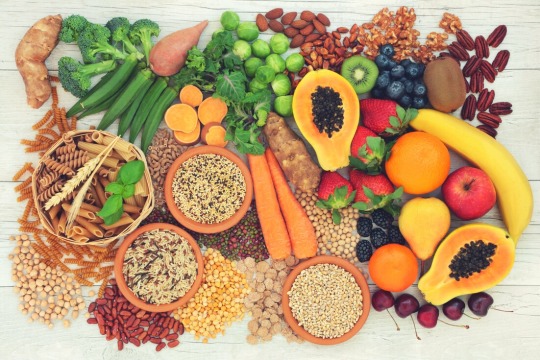
Report Coverage
The report: “Fruit Fiber Market Forecast (2022-2027)”, by Industry ARC, covers an in-depth analysis of the following segments of the Fruit Fiber Global Market.
By Fruit Type: Passion, Banana, Blueberry, Plum, Apple, Cranberry, and Others.
By Properties: Soluble and Insoluble.
By Application: Textile fabrics, Pharmaceuticals, Dietary Supplements, Animal feed, Food & Beverages, and Others.
By Geography: North America (U.S., Canada, and Mexico), Europe (Germany, UK, France, Italy, Spain, Russia, and Rest of Europe), Asia-Pacific (China, India, Japan, South Korea, Australia & New Zealand, and Rest of Asia-Pacific), South America (Brazil, Argentina, Chile, Colombia and Rest of South America) and Rest of World (the Middle East and Africa).
Request Sample
Key Takeaways
Geographically, the North America Fruit Fiber Market accounted for the highest revenue share in 2021. The growth is owing to quality lifestyles, high purchasing power owing to prosperous economies, and health awareness among people.
Rising usage in food & beverages, a surge in the number of geriatrics, escalating merger and acquisition activities, expanding usage in the textile and pharmaceutical industry, broadening disposable income levels, and mounting prevalence of life-threatening complications such as heart attack, cancer, diabetes are said to be preeminent factors driving the growth of Fruit Fiber Global Market.
Jaw-dropping expansion in inflation rates, plummeting yield of fruit because of environmental calamities, and unemployment post-covid-19 are said to reduce the market growth.
Detailed analysis of the Strength, Weaknesses, and Opportunities of the prominent players operating in the market will be provided in the Fruit Fiber Global Market report.
Fruit Fiber Market Segment Analysis - By Fruit Type
The Fruit Fiber Global Market based on the fruit type can be further segmented into Passion, Banana, Blueberry, Plum, Apple, Cranberry, and Others. The orange and grapefruit segment held the largest share in 2021. Orange is eminent for its vitamin C and rich soluble fiber nature which plays a huge role when it comes to dipping cholesterol levels. Owing to the high amount of vitamin C, orange is preeminent in promoting collagen production which is an essential protein for skin health. In addition to that, orange has drawn an immense following among consumers because of its low caloric nature, ample varieties, and tangy flavor. Oranges are of utmost usefulness in reducing the risk of developing cancer and maintaining stable blood pressure. Also, grapefruit is proving to be quite a health-friendly choice because of the high number of antioxidants that inhibit tumor cells. Moreover, it promotes weight loss and overhauls prostate cell DNA. Nevertheless, the passion fruit segment is estimated to be projected to witness growth with a CAGR of 5.9% over the forecast period 2022-2027. This seedy and sweet fruit is a powerhouse of nutrients. The abundance of heart-healthy potassium and dietary fibers makes it an appropriate remedy for confiscating surplus cholesterol from blood vessels, therefore, supporting the segment growth.
Inquiry Before Buying
Fruit Fiber Market Segment Analysis - By Application
The Fruit Fiber Global Market based on application can be further segmented into Textile fabrics, Pharmaceuticals, Dietary Supplements, Animal feed, Food & Beverages, and Others. The food and beverage segment held the largest share in 2021. Fruit fibers play a significant role in moisture management and as an emulsifier in food and beverages. Beverages with soluble fibers on reaction with abdominal fluid form a gel and slow down the rate of digestion in order to expand the time span for the body to extract as many nutrients as it can. In baker confections, fibers derived from citrus fruits like grapefruit and orange act as a water binding agent and uphold the freshness of products over time by binding a large amount of water and oil and not releasing it over time. Furthermore, the textile segment is estimated to be the fastest-growing with a CAGR of 5.2% over the forecast period 2022-2027. This growth is owing to the soaring demand for fruit fibers as an essential raw material for developing textile fibers. For instance, pineapple fibers play a crucial role in the fabrication of non-woven, home textiles, and upholsteries. Owing to their anti-bacterial properties, cream color, and silk shine, the fruit fibers have started to replace jute in the textile industry, thus augmenting the segment growth in the near future,
Fruit Fiber Market Segment Analysis - By Geography
The Fruit Fiber Global Market based on Geography can be further segmented into North America, Europe, Asia-Pacific, South America, and the Rest of the World. North America held the largest share with 39% of the overall market in 2021. Owing to the rising food and beverage industry and massive population Asia-Pacific has the potential to lead the market but lack of awareness among people has not aided the market fully. However, the growth in the North American region is owing to the factors such as health proactiveness, high living standards of people, the astounding pervasiveness of obesity, and confounding demand for fortified food and beverages. Also, high urbanization rates and disposable incomes are other crucial factors accountable for the market hold in the said region. Nevertheless, Asia-Pacific is expected to be the fastest-growing segment over the forecast period 2022-2027. This growth is owing to the steep expansion in the number of geriatrics, enlarging gastrointestinal infections and other serious illnesses because of the quick adoption of modern lifestyles, and expanding textile industry of Bangladesh. Furthermore, jaw-dropping growth in the pharmaceutical industry of India and China, immense population, broadening size of the middle-class population, proliferating economic wealth of nations, and rapid migration of people from rural areas to urban areas are the factors thrusting the market growth.
Schedule a Call
Fruit Fiber Market Drivers
The startling surge in obesity and gastrointestinal infections is anticipated to boost market demand.
Obesity is directly proportional to the imbalance risen between expended and consumed calories. Over time this imbalance results in excessive fat and set grave health repercussions like diabetes and heart attack in motion. Consequently, the rise in prevalence of such illnesses has prompted people to make more demand for fruit fibers so that they can circumvent these threats. According to World Health Organization, as of 2022, over 1 billion people across the globe are facing the obesity problem. Out of these 1 billion, 650 million are adults, and teenagers and children are accounting for 340 million and 39 million respectively. Obesity has become a big headache for countries in Oceania such as Nauru, Cook Islands, Tonga, and others as the body mass index of these nations has crossed the mark of 30 which represent obesity of class 1. On another hand, the surge in gastrointestinal infections post-covid-19 is overwhelming. According to the National Center of Biotechnology Information, nearly 51.9 percent of the patients diagnosed with covid had gastrointestinal patients. Thus, these health issues generate a need for the consumption of fibers which in turn is anticipated to fuel market growth.
Growing fruit production, an upsurge in GDP per capita, and rapid urbanization are expected to boost market demand.
In the wake of sky-rocketing demand, the overall fruit production has soared globally. For instance, global banana production in 2020 was 119.83 million metric tons; whereas, apple production stood at around 86.44 million metric tons. China is the leading fruit producer with more than 242 million metric tons followed by India with more than 100 million metric tons of production. In addition to that, expanding purchasing power of people in developing nations because of rising economic affluence has propelled the demand for high-end fruits such as passion fruit driving the market growth. Manufacturing and exports are two important pillars of economic prosperity. In FY 22 India witnessed a record-breaking export worth $418 billion. The figure might be an appropriate justification for the soaring per capita income of the country. Therefore, these factors are going to play a gigantic role in the market growth.
Buy Now
Fruit Fiber Market Challenges
The environmental catastrophes and rising cost of living are anticipated to hamper the market growth.
Owing to widescale use of fertilizers to increase the yield of fruit drastically is adversely impacting the fertility of the soil. The organic content in the soil of major agriculture-dependent nations like India has plummeted sharply over the years. 2.5 percent to 3 percent organic content in soil is an international standard that represents healthy soil and fertile soil. However, the percentage has dipped to nearly 0.5 percent in croplands of northwest Indian states. On another hand, the rising cost of living because of unfortunate conflict in Europe is likely to challenge the import & export of the aforementioned market in turn impeding the market growth.
Fruit Fiber Industry Outlook:
Product launches, mergers and acquisitions, joint ventures, and geographical expansions are key strategies adopted by players in the aforementioned Market. Fruit Fiber Global market top 10 companies include:
Carlina Ingredients
Citrus Extracts LLC.
AGT Foods and Ingredients
CP Kelco Inc.
Fiberstar Inc.
Taiyo International
Royal DSM N.V.
Cargill Inc.
Tate & Kyle Plc.
DuPont de Nemours Inc.
For more Food and Beverage Market related reports, please click here
#Fruit Fiber Market price#Fruit Fiber Market size#Fruit Fiber Market share#Fruit Fiber Market trends#Fruit Fiber Market research#Fruit Fiber Market forecast#Fruit Fiber Market report
2 notes
·
View notes
Text
Iodine Derivatives Market Size Estimation, Consumption, And Growth Opportunities Till 2028

COVID-19 IMPACT ANALYSIS ON GLOBAL IODINE DERIVATIVES MARKET
The exclusive COVID-19 impact analysis report by Axiom MRC provides a 360 degree analysis of micro and macro-economic factors on the global iodine derivatives market. In addition, complete analysis of changes on the global iodine derivatives market expenditure, economic and international policies on supply and demand side. The report also studies the impact of pandemic on global economies, international trade, business investments, GDP and marketing strategies of key players present in the market. During COVID-19 pandemic, global iodine derivatives market was more or less affected due to supply chain distribution, declining demand for iodine derivatives from various application like food & feed, agrochemical, electronic, which has certainly affected the market growth to major extend. However, post COVID-19 the market has witnessed the rising new growth opportunities and is expected to have emerging demand in upcoming years.
To know the scope of our report get a sample on https://www.axiommrc.com/request-for-sample/11217-iodine-derivatives-market-report
MARKET OVERVIEW- GLOBAL IODINE DERIVATIVES MARKET
MARKET DRIVERS
The key factor driving the market growth are Increasing use of iodine derivatives in human food and animal feed. Iodine is an essential nutrient for both humans and animals. Deficiencies of iodine in animals can cause severe health effects such as goitre and reduced growth rates. Owing to the scarcity of iodine, it is often necessary to supplement animal feed with various forms of iodine like calcium iodate and ethylenediamine hydroiodide (EDDI). The iodine in the feeds support healthy growth in animals like broiler chickens. For instance, in September 2018, Micronutrients USA and Kemin Industries launched Intelli Bond VITAL 5 CR as an essential nutrition package containing six essential trace minerals. The introduction of Intelli Bond VITAL 5 Cr comes at a time when concern is rising about the integrity of feed ingredients sourced from outside the United States. The new offering delivers zinc, manganese, copper, cobalt and iodine from Micronutrient’s essential Intelli Bond VITAL 5 blends, with the added power of Kemin’s Kem Trace Chromium.
MARKET OPPORTUNITY
The global iodine derivatives market is expected to witness increasing new growth opportunities for market with growing iodine deficiency among people. Iodine deficiency is still a public health problem in 54 countries. A total of 36.5% (285 million) school-age children were estimated to have an insufficient iodine intake, ranging from 10.1% in the WHO region of the Americas to 59.9% in the European region. Iodine deficiency is a major threat to the health and development of population across the globe, primarily in preschool children and pregnant women. When requirement for iodine is not met, thyroid hormone synthesis is impaired, resulting in a series of functional and development abnormalities collectively referred to as iodine deficiency disorders (IDD). Conditions related to iodine deficiency comprises goitre, still-birth and miscarriage, hypothyroidism and impaired growth.
MARKET RESTRAINTS
The major restraining factor for the global iodine derivatives market is toxicity of iodine and health related issue. Iodine induced hyperthyroidism may be dangerous in patients with underlying heart diseases. In iodine sufficient individuals, iodine excess causes elevated thyroid stimulating hormones levels, which inhibits thyroid hormone production leading to hypothyroidism and goitre. Iodine toxicity is a rare condition which requires a broad initial diagnosis and heightened suspicion. These patients may exhibit vague signs and symptoms like nausea, vomiting, and diarrhoea. While history taking may reveal the toxicity, the cause is difficulty to determine without further evaluation.
MARKET GROWTH CHALLENGES
The COVID-19 pandemic has disrupted global supply chain networks in an unprecedented way. Supply-demand imbalances have pushed manufacturers across sectors to grapple with multiple challenges including rising commodity prices, logistics disruptions & port congestions, and shifting customer behaviour. At the same time, the move towards sustainability is driving almost all industry sectors towards sustainable production and operations that is good for people and the planet.
CUMULATIVE GROWTH ANALYSIS
The report provides in-depth analysis of global iodine derivatives market, market size, and compound annual growth rate (CAGR) for the forecast period of 2022-2028, considering 2021 as the base year. With increasing demand for various iodine derivatives in various applications has led the increasing demand for market and is expected to witness the growth at a specific CAGR from 2022-2028.
MARKET SEGMENTAL OVERVIEW
The global iodine derivatives market comprises of different market segment like type, application and geography.
IODINE DERIVATIVES MARKET BY TYPE
The type studied in the global iodine derivatives market are potassium iodate, sodium iodate, calcium iodate, potassium iodide, copper iodide, ethylenediamine dihydroiodide, and others. Potassium iodide has register major market share during the estimated time period (2022-2028) and is likely to maintain its dominance over the estimated time period. With wide range of application and uses in various application industry is expected to drive the demand for global iodine derivatives market. Furthermore, ideally potassium iodide is mostly present in colourless crystals or white powder, which is odourless. The taste of the chemical is almost like saline and slight bitter. It is often used as nutritional supplement in animal feed and in human diet, in treatment of hyperthyroidism used as expectorant. Also used in some disinfectant and hair treatment chemicals.
IODINE DERIVATIVES MARKET BY APPLICATION
The global iodine derivatives market finds its major application in pharmaceutical, food & feed, cosmetics, agrochemical, electronics, nylon production, and others (chemical, sanitation). Pharmaceutical is likely to gain major market share during the estimated time period. The market players have witnessed rising new growth opportunities in this application sector as in pharmaceutical, the iodine derivatives are mostly used for preparing disinfectant, bactericides, and analgesics among others like tincture of iodine. Besides, the pharma companies often have increasing demand for various potassium iodate with rapid demand for various pharma products to maintain their patient engagement where pharmaceutical chemicals have witnessed demand globally. Besides, with increasing spread of COVID-19 the market has specifically increased its requirement.
IODINE DERIVATIVES MARKET BY GEOGRAPHY
The global iodine derivatives market is studied for the following region North America, Europe, Asia-Pacific and Rest of the world (RoW). North America is likely to witness rising demand for iodine derivatives market. North America dominates the iodine derivative market due to the rise in the meat consumption. Furthermore, the increase in the poultry industry will further boost the growth of the iodine derivative market in the region during the forecast period. Europe is projected to observe significant amount of growth of the iodine derivative market due to the rise in the healthcare expenses spent by the government. Moreover, the increase in the number of cancer patients is further anticipated to propel the growth of the iodine derivative market in the region in the coming years.
COMPETITIVE LANDSCAPE ANALYSIS
The competitive landscape analysis of iodine derivatives market is certainly based range of market players operating in the chemical & material market with increasing demand for production of iodine derivatives. Besides, number of market players offered wide range of products for different application in various geographic locations. The market has major competitive analysis based on new product launches as well as other developments.
The key players studied in market are Iofina plc., Godo Shigen Co., Ltd, Nippoh Chemicals., Zibo Wankang Pharmaceutical Chemical., Nanjing Taiye Chemical Industry, Qingdao Gimhae Iodide Chemical Co, Ajay-SQM Group., Infinium Pharmachem Pvt Ltd, Amphray Laboratories, Samrat Pharmachem Limited, Calibre Chemicals Pvt. Ltd, Omkar Speciality Chemicals Ltd, Merck Ltd., among others.
RECENT DEVELOPMENT:
January 2018: Iofina plc. Announced to strategically expand iodine production by bringing IO#7 into production, a plant which will significantly increase iodine output whilst reducing the Group’s overall iodine production cost.
Buy now Iodine Derivatives Market Report https://www.axiommrc.com/buy_now/11217-iodine-derivatives-market-report
About Us:
Axiom Market Research & Consulting™ is a full-service market research and data analytics company providing key market intelligence to global companies to take informed business decisions pertaining to their marketing strategy, investments, new product launches, market competition, consumer or end users, social media trends etc.
Axiom Market Research & Consulting™ offers market research services such as syndicated market research, custom market research, business consulting, and consumer/end user surveys. Under Business to Consumer (B2C) market research offerings, Axiom MRC assists its clients in finding quantitative information/preferences of its brands and services such as, awareness, usages, satisfaction, tracking, ethnicity etc. Axiom MRC offers data collection services through online surveys, social media, data processing and interpretation.
Axiom MRC with its experienced team of research and data analysts, has delivered more than 5000+ Market Research Projects, 3800+ Data Analytics Projects, 1200+ Business Support Projects and has a 800+ Global Client Base. Axiom Market Research & Consulting™ aims to become the preferred market research and data analytics company by providing key market intelligence solutions for client’s business growth.
Contact Us:
Axiom Market Research & Consulting™
3 Germay Dr. Ste 4 - 4666
Wilmington DE 19804
U.S.:- + 1 (845) 875-9786
U.K.:- + 44 (0) 20 3286 9707
Email: [email protected]
Website: https://www.axiommrc.com/
Blog: https://industrywatch24.com/
Follow On
LinkedIn: https://www.linkedin.com/company/axiom-market-research-and-consulting/
Twitter: https://twitter.com/AxiommrcCom
Instagram: https://www.instagram.com/axiom_mrc
Facebook: https://www.facebook.com/axiommrc
#news#newsletter#chemical#material#trending#marketanalysis#marketgrowth#research#viral#iodine#derivatives#market#pressrelease#viralvideos
1 note
·
View note
Text
Exploring Innovations in the Animal Feed Market Forecast 2028
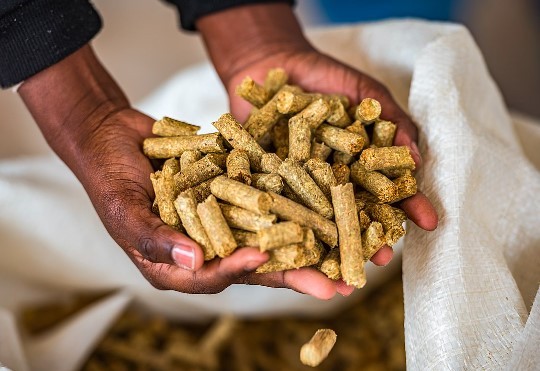
Market Size and Growth
The Animal Feed Market is witnessing robust growth globally, fueled by the increasing demand for high-quality animal protein, growing livestock populations, and rising consumer awareness about animal nutrition and welfare. According to recent market research reports, the global animal feed market was valued at over USD 460 billion in 2021 and is projected to exceed USD 650 billion by 2028, registering a compound annual growth rate CAGR of 4% during the forecast period.
Key Drivers of Market Growth
Rising Meat Consumption:
The growing global population, rising disposable incomes, and changing dietary preferences are driving an increase in meat consumption worldwide.
As a result, there is a corresponding rise in demand for animal feed to support the production of livestock, poultry, and aquaculture species.
Expansion of Livestock Production:
Developing economies, particularly in Asia-Pacific and Latin America, are witnessing rapid urbanization and industrialization, leading to the expansion of intensive livestock farming operations.
This trend is driving the need for efficient and nutritious animal feed formulations to support the health, growth, and productivity of livestock and poultry.
Technological Advancements:
Innovations in feed processing technologies, such as extrusion, pelleting, and micronization, are improving the digestibility, palatability, and nutritional value of animal feeds.
Advanced feed additives and supplements, including vitamins, minerals, amino acids, and growth promoters, are enhancing animal performance and health outcomes, driving market growth.
Regional Market Insights
Asia-Pacific:
Asia-Pacific dominates the global animal feed market, accounting for the largest share of both production and consumption.
Rapid urbanization, rising disposable incomes, and increasing meat consumption in countries like China, India, and Vietnam are driving market growth in the region.
North America:
North America is a mature market for animal feed, characterized by high levels of automation, stringent quality standards, and advanced feed formulation practices.
The region benefits from a well-developed livestock industry, strong regulatory frameworks, and a focus on sustainability and animal welfare.
Europe:
Europe is witnessing a shift towards sustainable and organic animal farming practices, driving demand for organic and natural feed ingredients.
Regulatory initiatives promoting antibiotic-free production, animal welfare standards, and environmental sustainability are shaping the European animal feed market landscape.
Conclusion
The Animal Feed Market is poised for significant growth in the coming years, driven by factors such as rising meat consumption, expanding livestock production, and technological advancements in feed formulation and processing. As the industry continues to evolve, stakeholders must stay abreast of emerging trends, regulatory developments, and consumer preferences to capitalize on growth opportunities and address challenges effectively. By embracing innovation, sustainability, and collaboration, the animal feed industry can play a crucial role in ensuring food security, nutrition, and environmental sustainability for future generations.
#Animal Feed Companies#Animal Feed Additives Market#Animal Feed Market Share#Animal Feed Market#Animal Feed Industry#Animal Feed Market Size#Compound Feed Market#Global Animal Feed Market#Global Animal Feed Market Size#Animal Feed Market Growth#Animal Feed Market Challenges#Animal Feed Market Research Reports#Animal Feed Industry Research Reports#Animal Feed Supplements Market#Animal Feed Suppliers Market#Animal Feed Market Size in India#Animal Feed Market in UAE#Importance of Animal Feed Market
0 notes
Text

Animal nutrition emphases on dietary needs of animals, primarily those in food production and agriculture, but also in aquariums, zoos, and flora and fauna management.
Read More: https://cmi-reports.blogspot.com/2023/06/global-animal-nutrition-market-growth.html
#coherent market insights#healthcare Industry#Pharmaceutical#Global Animal Nutrition Market#Livestock feed#Nutritional supplements#Animal health#Animal welfare
0 notes
Link
0 notes
Text
How is Ava Chemicals Revolutionizing EDTA Applications Across Industries?
Ensuring Optimal Performance with EDTA Portfolio
Across various industries, from pharmaceuticals and cosmetics to food and agriculture, maintaining optimal quality and performance is paramount. This is where Ethylenediaminetetraacetic acid (EDTA) plays a crucial role. Our range of products include Tetra Sodium, Calcium, Cu Chelated copper, Ferric Sodium, Disodium Magnesium, Disodium Manganese, and Zinc.
Ava Chemicals is a prominent name in this field with a 40-decade experience. Our high-grade EDTA products are currently applicable for various uses.
What makes us different in our approach to address specific needs? Our team prioritizes maintaining the highest quality standards throughout its EDTA production process. They adhere to stringent international quality control measures. As an ISO 9001:2015 company is trusted due to its strong technical background.
This post focuses on the important reasons why we are known as one of the best EDTA Ferric Sodium Suppliers in India and even as EDTA Zinc manufacturers in India.
A brief overview of product profile
Ferric Sodium EDTA: This chelating agent effectively binds iron, preventing unwanted reactions and enhancing product stability. It finds applications in food preservation, animal nutrition, and textile dyeing.
Disodium Magnesium EDTA: It is known for its ability to chelate magnesium and calcium ions. It is used in detergents, personal care products, and industrial water treatment processes.
Zinc EDTA: This product plays a vital role in micronutrient fortification and acts as a masking agent in various industrial applications.
Manganese EDTA: An essential micronutrient, it is crucial for plant growth and is often used in fertilizers and animal feed additives.
Cu Chelated Copper: Copper ions are bound to a chelating agent, typically EDTA and chelation allows for easier uptake of copper.
Calcium EDTA: Calcium ions are bound to EDTA. Calcium EDTA finds applications in enriching food products like cereals and milk. Industrial processes like water treatment and paper production also need it regularly.
It is crucial to consult with agricultural experts or relevant specialists to determine the appropriate use and dosage of Cu Chelated Copper or Calcium supplements depending on the specific needs.
Our responsible approach
We have a team which is trained in responding to a customer-centric approach.
As leading EDTA Tetra Sodium Suppliers in India, we have a three-point strategy to serve our customers.
Understanding Client Needs: The company actively engages with customers to comprehend their specific requirements and challenges. This allows them to recommend the most suitable EDTA solutions for unique needs.
Dedicated Technical Support: A team of highly qualified experts is readily available to provide technical support and answer inquiries. We ensure they have the necessary information to utilize our products.
Timely Delivery: Our agents adhere to strict timelines to fulfil orders efficiently. It minimizes disruptions in operations.
Sustainability and Transparency
These are the core aspects that have ensured our business in the competitive market. We strive to implement them through responsible operations. We have built strong relationships due to the following reasons.
Implementing Sustainable Practices: We continuously explores ways to minimize the environmental footprint. This includes utilizing eco-friendly packaging materials. The staff optimizes production processes for reduced resource consumption.
Prioritizing Transparency: We maintain open communication with customers regarding their sustainability efforts. The origin of raw materials, fostering trust and building a responsible brand image are equally important
Consistent Purity: The company utilizes advanced manufacturing processes to guarantee consistent product purity. We meet the specific requirements to serve each industry.
Complete Traceability: Strict quality control procedures are implemented throughout the manufacturing process. We allow complete traceability of raw materials and finished products.
Verified Certifications: We actively seeks certifications from reputable organizations to demonstrate our unwavering commitment to quality.
Ava Chemicals is also one of the popular EDTA Disodium Magnesium manufacturer and Suppliers in India. We guarantee high performing EDTA solutions. Get in touch with our team to understand how we can fulfil your requirement.
#EDTA Ferric Sodium#Ammonium Formate (EP / LR GRADE) Suppliers in India#Ammonium Formate (EP / LR GRADE) Manufacturers in India#EDTA Disodium Manganese Manufacturers in India#EDTA Disodium Manganese Suppliers in India#Ammonium Acetate (EP/LR) Manufacturers in India#Ammonium Formate (AR / GR GRADE ) Suppliers in India#Zinc Acetate (EP/LR) Manufacturers in India#Ammonium Formate (AR / GR GRADE) Manufacturers in India#EDTA Disodium Magnesium Suppliers in India#EDTA Disodium Magnesium Manufacturers in India#EDTA Cu Chelated Copper Suppliers in India#Ammonium Acetate (AR/GR/ACS) Suppliers in India#Ammonium Acetate (EP/LR) Suppliers in India#Potassium Acetate Suppliers in India#Potassium Acetate Manufacturers in India#Ammonium Acetate (AR/GR/ACS) Manufacturers in India#Lead Acetate (EP/LR) Manufacturers in India#Lead Acetate (EP/LR) Suppliers in India#Ammonium Formate EP GRADE Suppliers in India#Zinc Acetate (EP/LR) Suppliers in India#Ammonium Formate EP GRADE Manufacturers in India#DTA Cu Chelated Copper Manufacturers in India#Ammonium Formate LR GRADE Manufacturers in India#Disodium Calcium EDTA Suppliers in India#Disodium Calcium EDTA Manufacturers in India#Zinc Citrate Suppliers in India#EDTA Calcium Suppliers in India#Zinc Citrate Manufacturers in India#Manganese Acetate Tetrahydrate Suppliers in India
0 notes
Text
Lutein Market Overview: Extensive Evaluation of Market Size, Share, Growth Opportunities
The global lutein market size was estimated to reach USD 527.20 million, growing at a CAGR of 5.8% from 2024 to 2030, according to a new report by Grand View Research, Inc. Increasing awareness of the benefits associated with lutein in maintaining eye health, particularly in preventing age-related macular degeneration (AMD) is driving the market growth. Moreover, the widespread use of smartphones, tablets, and computer screens has led to an increase in digital eye strain, a condition that can cause dry eyes, headaches, and fatigue. Lutein has been shown to help reduce the symptoms of digital eye strain, making it an attractive ingredient for products marketed to digital device users.

Preventive healthcare is becoming more popular as consumers are increasingly taking a proactive approach to their health. Moreover, manufacturers are incorporating lutein into a wide range of products, including supplements, fortified beverages, and snack bars, to meet the growing demand for health-promoting ingredients. This trend is further intensified by the growing demand for natural ingredients and clean-label products, making lutein a highly sought-after ingredient in the food and beverage industry. The advancements in cultivation techniques, processing technologies, and extraction processes have led to improved quality and yield of lutein extracts.
The natural lutein segment held a major share of the market in 2023, owing to an increasing focus on preventive healthcare and wellness and a surge in demand for lutein supplements, as consumers seek natural solutions to maintain their overall health and well-being. Moreover, the growing popularity of plant-based diets and the increasing demand for vegan-friendly ingredients are also opening up new opportunities for the natural lutein market. Furthermore, the demand for natural lutein is also increasing in the cosmetics industry, which uses it as a skin-brightening and anti-aging ingredient.
The powder segment held the largest share in 2023. Powdered lutein is more stable and has a longer shelf life, making it easier to store and transport. Its versatility allows for easy integration into various food products, including smoothies, yogurt, and protein bars, without altering the flavor or texture. Moreover, the powder form allows for precise dosing, ensuring optimal nutrient intake. Besides, the high bioavailability and stability of powder form also make it an ideal ingredient for enhancing the nutritional value of animal feed, dietary supplements, and pharmaceutical formulations.
The dietary supplements applications held a major share of the market in 2023, owing to the increasing prevalence of eye conditions, such as age-related macular degeneration (AMD) and cataracts, which has led to a surge in demand for lutein supplements. Moreover, as consumers become more health-conscious and preventive in their approach to healthcare, the demand for dietary supplements is anticipated to grow in the coming years. This trend, combined with the growing accessibility and affordability of lutein supplements, further fuels market expansion. Besides, the increasing availability of lutein supplements in various forms, including capsules, gummies, and powder will further boost the market growth.
Europe accounted for the largest share of the market in 2023. European consumers are becoming increasingly health-conscious and are seeking ways to maintain their well-being. This has led to a growing demand for supplements and functional foods that promote eye health. Moreover, the aging population in Europe is more susceptible to eye-related disorders, such as age-related macular degeneration (AMD) and cataracts, further driving the demand for lutein. Besides, the rising popularity of vegan and vegetarian diets has led to an increase in the demand for lutein as a natural alternative to animal-based sources.
Major market players adopting various steps including new product launches, partnerships, mergers & acquisitions, global expansion, and others to gain more share of the market. They are building strong online sales channels to sell directly to consumers, bypassing traditional retail channels.
For More Details or Sample Copy please visit link @: Lutein Market Report
Lutein Market Report Highlights
Asia Pacific is expected to grow with a considerable CAGR from 2024 to 2030. The changing consumer preferences and the increasing popularity of cafe culture are driving the product demand in the region. Moreover, increased e-commerce access and the entry of international brands further enhance market growth.
Synthetic segment is estimated to grow with a substantial CAGR from 2024 to 2030. Synthetic lutein offers a consistent and reliable source of high-quality lutein. This consistency is particularly crucial for manufacturers of lutein supplements, ensuring a standardized and predictable product. Moreover, synthetic lutein production allows for scalability, enabling manufacturers to meet the growing demand for lutein in the market.
Beadlet segment is estimated to grow with a substantial CAGR from 2024 to 2030. The features such as enhanced stability and protection against degradation, making it suitable for long-term storage and use in various applications. Their small size and uniform shape allow for precise dosage control and seamless integration into capsules, tablets, gummies, and food matrices.
The food and beverage segment is expected to grow with a considerable CAGR from 2024 to 2030. Lutein possesses antioxidant and protective effects against oxidative stress and inflammation, making it a valuable ingredient in health-conscious food formulations. Its role in supporting eye health, particularly in protecting against age-related macular degeneration (AMD), has also gathered attention, driving its inclusion in functional foods and beverages.
For Customized reports or Special Pricing please visit @: Lutein Market Report We have segmented the global lutein market based on the source, form, application, and region.
#LuteinMarket#LuteinIndustry#LuteinSupplements#DietarySupplements#EyeHealth#Nutraceuticals#Antioxidants#LuteinDemand#LuteinProduction#Carotenoids#NaturalPigments#PharmaceuticalApplications
0 notes
Text
0 notes